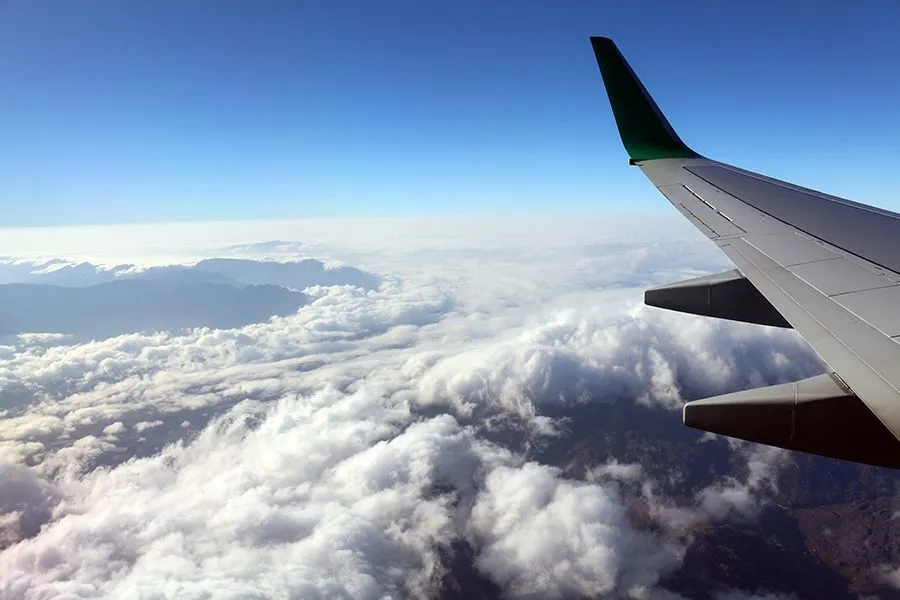I am scared of flying. I suffer from claustrophobia, as well as of a fear of heights. It helps when I sit in an aisle seat, but only just.
I read on Google: "Signs you may be afraid of flying include becoming anxious in elevators, having panic attacks before getting on a plane, or going out of your way to avoid air travel." How well they know me!
I have family in Cape Town, which is a 2 hour flight from where I live. Every time before a flight, I get the jitters. I know a crash will probably never happen, but this piece of knowledge doesn't help me feel better about it. In the end I do relax and sort of enjoy it, but I am very relieved when we land safely.
There are a few things you can do to make sure you are better prepared, in case of an emergency:
If you are a woman, wear flat shoes. In the case of a crash, you don't want to totter around in high heels, and going barefoot can be a pain on hot tarmac. And no, no flip-flops either. That goes for comfortable clothes too. Dress sensibly. Jeans is the best choice. Every time you dress for a flight, ask yourself, "will I be able to slide down that chute in this?"
Count the seats to the nearest 2 (yes, two) exits. Know exactly where they are the moment you sit down. Never assume that the exit closest to you will be available. It might not be.
A window seat is wonderful for the view, I agree, but in the case of a crash, an aisle seat will allow you to move out much faster. You won't have to climb over the people sitting next to you, neither will you have to climb over mangled seats blocking your way.
Don't try and help the person next to you with his/her oxygen mask. You only have 15 minutes, and will lose valuable time. In this case, it is each man to himself.
Fasten that seat belt tightly, and don't take it off. I can't imagine how it must feel flying for longer than 2 hours being strapped in, but this is good advice, believe me. Do not take it off.
Assume you'll lose your electronics. So do that backup of your precious photos and other data the night before you leave.
Place your camera under the seat in front of you. You won't be allowed to keep it on your lap during take-off and landing. Don't put it in the overhead storage bin above your head.
It may sound silly, but don't keep the snacks trolley occupied for too long by your side. Let them rather move on.
The best position to brace is where you crouch down and try to reduce the forward movement of your upper body and head. The reason for bracing really is to keep you from injuring yourself, so that you can help yourself with self-evacuation afterwards. Don't brace with your legs, this could break them, and don't think pillows and blankets (if they are issued) will absorb any of the energy of the impact. It won't.
According to http://www.airsafe.com/issues/fear.htm, it doesn't help to try and comfort people like me with statistics on how safe flying actually is. This is so true. It doesn't allay my fears at all. I worry about things like, has the airplane been properly serviced lately, and how good are ALL the tires on this machine?
It won't be necessary to fly to Cape Town soon, but there will come a time when I'll have to, and yes, I'm already starting to work out other possibilities and strategies in my mind. In the end I'll fly (because 2 hours are faster than spending 2 days on the road via car, bus or train), and I'll get there safe, and I'll enjoy my stay and not even worry too much about the flight home. But a great relief will flood me when the airplane comes to a stand still back home, and I can get up and gather my things and get off. And I'll be okay afterwards - until the next flight looms closer...

Photo taken with my Canon 700D, July 2016 on a Kulula flight on the way to my mom's funeral. I must admit, that nearing Cape Town from the air must be one of the most beautiful sights on earth. The mountains and the ocean are absolutely breathtaking.
Take care!